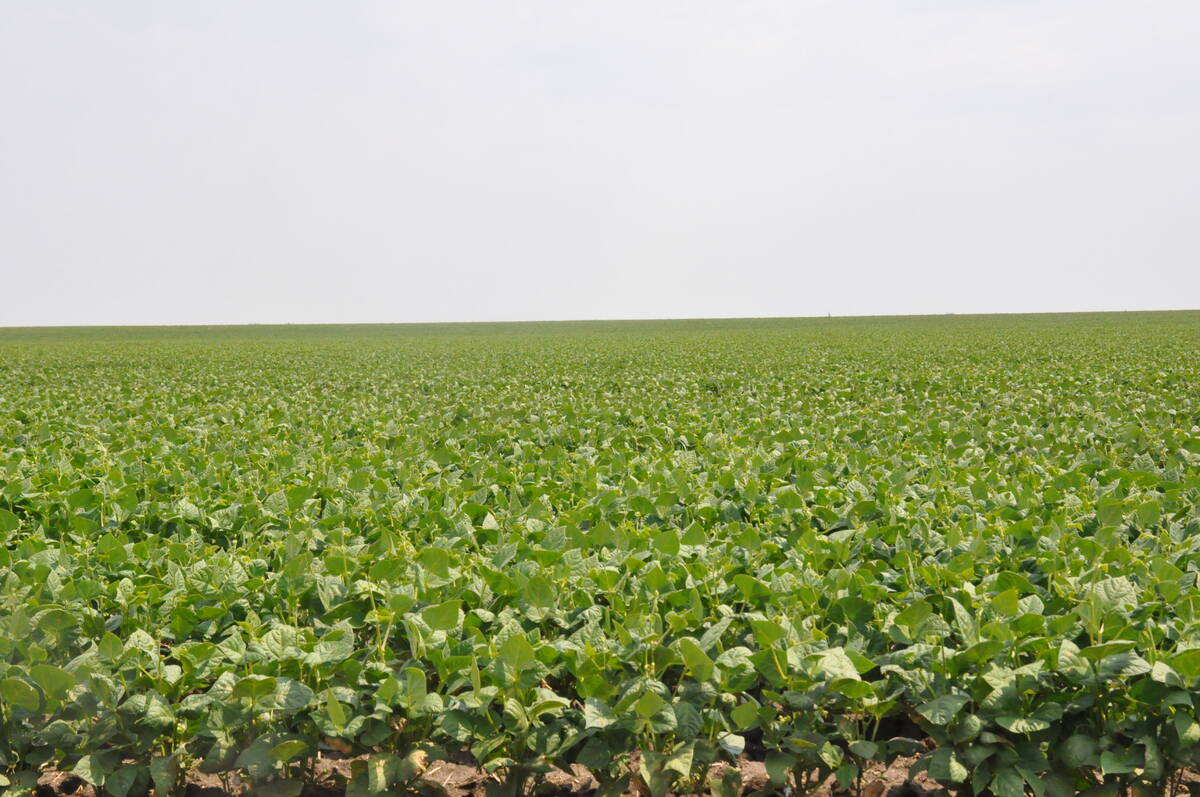Sunny, hot weather is helping crops advance rapidly across the Prairies.
Crops are a week behind normal development in southern Alberta due to a cool wet spring, with canola finished flowering and most crops starting to change colour.
The pea harvest began last week, said Ken MacDonald, crop specialist at Stettler.
He expects canola swathing to begin in the south and central regions by the third week of August.
“It depends on what the weather does between now and then,” he said.
Read Also

Coloured bean production down, whites are up
Bean prices have been slumping and the outlook is for more of the same.
Alberta expects an average crop, although growers in the once dry Red Deer, Stettler and Coronation regions are optimistic about strong yields.
Southern and some central regions of Saskatchewan have begun harvesting peas in addition to oats, fall rye and winter wheat.
Saskatchewan is expected to harvest 30 million tonnes of grain, oilseeds and special crops, 26 percent above the 10-year average, reports Saskatchewan Agriculture’s weekly crop report.
Northeastern Saskatchewan is expected to have the highest yields, while the southwest will likely have the lowest.
Generally 80 percent of the crop is rated good to excellent, with the crops well ahead of this time last year.
“That bodes well for a reasonable harvest,” said Terry Bedard, agricultural economist with Saskatchewan Agriculture. She said about one million acres have been combined or swathed in the province so far this year. Harvest activity was observed in all crops, other than flax and sunflowers, in most areas of Saskatchewan last week.
“There seems to be dribs and drabs all over the place,” Bedard said.
About 19 percent of the fall rye and 15 percent of the winter wheat are combined. One percent of lentils, one percent of chickpeas and seven percent of peas have been combined.
Temperatures soaring into the 30s C hurt crops in the southeast and southwest where it was hotter and drier longer, she said.
“Yields are somewhat reduced due to the heat this past week,” said Bedard, who noted rain showers would give later seeded crops a boost.
The Prairies are generally looking for rain in the next week for crops, hay lands and pastures.
Manitoba’s drier days have allowed farmers to complete the first round of haying and allowed others to begin field work on unseeded acres.
Don Dixon, director of Manitoba Agriculture’s crop branch, was unsure about the likelihood of a second cut, noting that could lead to feed shortages, especially for dairy quality hay.
He said the heat has further stressed crops, many of which have shallow roots from excessive rains in the spring and early summer.
Fields are generally better in the west, northwest and north Interlake and where rolling topography allowed for faster drainage.
Harvest is under way on barley and peas, with average to below average yields expected for the winter wheat and barley.
“We’re looking at a couple of weeks before the picture starts to fill in and we know what we’ve got,” said Dixon.














